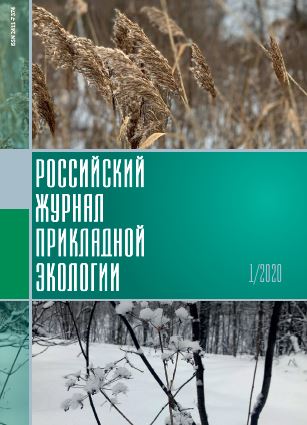The intensity of ammonia release during treatment of wastewater sediments with different doses of quicklime and zeolite
Keywords:
wastewater sediments, quicklime, zeolite, ammoniaAbstract
Under laboratory conditions, the intensity of ammonia release during the treatment of sewage sludge fields of Kazan municipal unitary enterprise «Vodokanal» with different doses of calcium oxide (quicklime) and activated zeolite was studied. Model experiments have shown that the main amount of calcium oxide formed as a result of sequential interaction with water and nitrogen-containing ammonia compounds is released into the atmosphere in the first 4-6 hours after its introduction into the treated substrate. Reducing the dose of introduced calcium oxide leads to a proportional reduction in the volume of ammonia released. When calcium oxide is dosed in sewage sludge at a concentration of 5% and, especially, 2.5% and 1.3%, the additional addition of 30% activated zeolite contributes to a significant reduction in the intensity and volume of hydrogen nitride released into the atmosphere. The amount of ammonia released when adding 10% of calcium oxide is almost independent of the presence of zeolite in the mixture. At hydrogen nitride concentrations of 1.3-5.0%, the activated zeolite not only absorbs part of the released gas, but also structures the product formed as a result of processing. The results obtained allow us to determine the technological parameters and intensity of treatment of wastewater precipitation, depending on the task (reducing humidity and/or decontamination of wastewater precipitation, binding of heavy metals, and others), the maximum permissible «release» of ammonia into the atmosphere, and the characteristics of the treated wastewater precipitation.
References
PND F 13.1.33-2002 (FR.1.31.2009.06093) Kolichestvennyj himicheskij analiz atmosfernogo vozduha i vybrosov v atmosferu. Metodika izmerenij massovoj koncentracii ammiaka v promyshlennyh vybrosah v atmosferu fotometricheskim metodom [Quantitative chemical analysis of atmospheric air and air emissions. Method for measuring the mass concentration of ammonia in industrial emissions into the atmosphere by the photometric method].
Turovskij I.S. Obrabotka osadka stochnyh vod [Sewage sludge treatment]. M: Strojizdat, 1988. 146 р.
Yakovlev S.V. Vodootvedenie i ochistka stochnyh vod [Wastewater and wastewater treatment]. M.: Strojizdat, 1974. 480 p.





